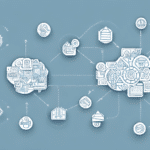The Role of KPIs in Measuring Operational Efficiency
In today’s competitive business landscape, measuring operational efficiency is crucial for organizations to maintain their edge and fulfill customer expectations. Key Performance Indicators (KPIs) serve as essential tools for assessing and enhancing operational efficiency across various business functions. This article delves into the importance of KPIs in measuring operational efficiency and offers actionable insights on leveraging KPIs to drive business success.
Introduction to Key Performance Indicators (KPIs) and Operational Efficiency
Key Performance Indicators, or KPIs, are quantifiable metrics that enable businesses to evaluate their performance against specific objectives. KPIs can measure effectiveness, efficiency, quality, compliance, customer satisfaction, and numerous other business aspects. Meanwhile, operational efficiency refers to a company's ability to utilize its resources optimally to deliver high-quality products or services to customers.
According to a Bain & Company report, improving operational efficiency can lead to a significant increase in profitability, with some companies seeing up to a 30% boost.
Importance of Measuring Operational Efficiency with KPIs
Measuring operational efficiency with KPIs is paramount for businesses aiming to track progress, pinpoint improvement areas, and optimize operations to reduce costs, increase revenue, and enhance customer satisfaction. By monitoring KPIs, companies can identify data trends and patterns, facilitating informed decision-making to refine their processes.
Furthermore, KPIs assist businesses in setting realistic goals and targets. Analyzing KPI data helps identify shortcomings relative to targets, enabling corrective actions that ensure competitiveness and long-term success.
How to Identify and Define Relevant KPIs for Your Business
Aligning KPIs with Business Goals
To accurately measure operational efficiency, it's essential to identify KPIs that align with overarching business goals and objectives. For instance, if a company's goal is to enhance customer satisfaction, relevant KPIs might include Customer Retention Rate or Net Promoter Score (NPS).
Industry-Specific KPIs
Different industries have unique benchmarks and standards. A retail business may focus on KPIs like Sales per Square Foot or Inventory Turnover Rate, whereas a healthcare organization might prioritize Patient Satisfaction or Readmission Rates.
Stakeholder Involvement
Engaging all relevant stakeholders—employees, managers, and executives—in defining KPIs ensures that the selected metrics are relevant, measurable, and achievable. This collaborative approach fosters ownership and accountability, enhancing motivation across the organization.
Understanding Different Types of KPIs for Measuring Operational Efficiency
Financial KPIs
- Revenue Growth Rate
- Profit Margin
- Cash Flow
Customer KPIs
- Customer Retention Rate
- Net Promoter Score (NPS)
- Customer Lifetime Value (CLV)
Process KPIs
- Cycle Time
- Defect Rates
- Operational Downtime
Employee KPIs
- Staff Turnover Rate
- Employee Productivity
- Absenteeism Rate
Choosing the right KPIs requires a deep understanding of business goals and the specific areas needing improvement. For example, a company focused on cost reduction may prioritize financial KPIs, while one aiming to enhance customer satisfaction might focus on customer-related metrics.
Setting Realistic Targets and Benchmarks for Your KPIs
Establishing Achievable Targets
Setting realistic targets is essential for accurate progress measurement. Targets should be based on historical data and industry benchmarks to ensure they are challenging yet attainable.
Utilizing Industry Benchmarks
Benchmarks provide standards set by industry peers and competitors. Regularly reviewing and adjusting targets based on these benchmarks ensures that the business remains competitive and responsive to market changes.
Resource Considerations
When setting targets, it’s crucial to consider the organization's resources and capabilities. Unrealistic targets can lead to employee frustration and demotivation, whereas achievable targets promote engagement and sustained performance.
Analyzing and Interpreting KPI Data to Improve Operational Efficiency
Data Analysis Techniques
Analyzing KPI data involves identifying trends, correlations, and patterns that can reveal areas of strength and opportunities for improvement. Tools like Tableau and Microsoft Power BI can aid in visualizing and interpreting data effectively.
Setting Benchmarks and Goals
Establishing benchmarks allows businesses to compare their performance against industry standards or their historical data. This comparison helps identify where the company excels and where improvement is needed, guiding strategic decision-making.
Data-Driven Decision Making
Interpreting KPI data enables businesses to make informed decisions that optimize operations and enhance efficiency. For example, identifying a rising defect rate might prompt an investigation into production processes to identify and rectify root causes.
Best Practices for Implementing KPI Metrics in Your Business Operations
Identifying Critical KPIs
Focus on the most impactful KPIs that directly influence business objectives. Prioritizing critical KPIs ensures that efforts are concentrated on metrics that drive significant performance improvements.
Communication and Stakeholder Engagement
Effective communication about the importance of KPIs to all stakeholders ensures alignment and fosters a culture of accountability and continuous improvement.
Ensuring Data Accuracy and Reliability
Accurate and reliable data is the foundation of effective KPI measurement. Implement robust data collection and reporting processes to minimize errors and maintain data integrity.
Leveraging Technology and Automation
Utilize technology to automate data collection and reporting. Tools like Domo and SAP Business Intelligence can streamline KPI tracking, reduce manual errors, and provide real-time insights.
Common Challenges in Measuring Operational Efficiency with KPIs and How to Overcome Them
Data Quality Issues
Ensure data accuracy by validating data sources and maintaining rigorous data management practices. Implementing data governance frameworks can help maintain high data quality standards.
Lack of Clear Goals
Define clear, actionable business goals before selecting KPIs. Aligning KPIs with these goals ensures that metrics are relevant and drive meaningful performance improvements.
Insufficient Technology Investment
Invest in robust data analytics and business intelligence tools to support effective KPI measurement and analysis. Technology investments can enhance data accuracy and provide deeper insights.
Stakeholder Buy-In
Engage stakeholders by demonstrating the value of KPIs in achieving business objectives. Providing training and regular updates can foster a culture of data-driven decision-making.
Leveraging Technology to Streamline KPI Reporting and Analysis
Business Intelligence and Analytics Software
Tools like Tableau and Microsoft Power BI enable businesses to access KPI data, perform analyses, create custom dashboards, and generate real-time reports efficiently.
Automation of Data Collection and Analysis
Automating data processes reduces manual effort, minimizes errors, and ensures that KPI data is always current. Automation tools can handle repetitive tasks, allowing employees to focus on strategic activities.
Data Visualization and Sharing
Effective data visualization tools help in creating interactive dashboards that make KPI data easily understandable for stakeholders. Enhanced data sharing fosters better communication and collaboration, leading to improved business outcomes.
Case Studies: Real-World Examples of Businesses Successfully Using KPIs to Improve Operational Efficiency
UPS: Optimizing Delivery Routes
United Parcel Service (UPS) utilized KPIs to reduce fuel consumption and carbon emissions by optimizing delivery routes. This initiative not only decreased operational costs but also contributed to environmental sustainability.
Lexus: Enhancing Customer Service
Lexus employed KPIs to improve customer service by reducing response times to customer inquiries. Metrics such as Customer Satisfaction Scores and Response Time were critical in driving enhancements in customer interactions.
Target: Increasing Inventory Accuracy
Retail giant Target used KPIs to boost the accuracy of its inventory reports, resulting in faster and more precise restocking processes. This improvement led to better inventory management and increased sales efficiency.
McDonald's: Reducing Drive-Thru Wait Times
McDonald's implemented KPIs to decrease the average wait time in its drive-thru lanes. By tracking metrics like Order Accuracy and Order Completion Time, McDonald's successfully reduced wait times from 3 minutes to under 2 minutes, enhancing customer satisfaction and increasing throughput.
Conclusion: The Future of Measuring Operational Efficiency with KPI Metrics
In summary, KPIs are indispensable in measuring operational efficiency and driving business performance. By identifying and monitoring relevant KPIs, businesses can track progress, optimize operations, and boost profitability. With advancements in technology and data analytics, the future of KPI metrics in operational efficiency measurement is promising.
One emerging area is sustainability. As businesses increasingly prioritize environmental and social goals, KPIs will play a crucial role in tracking progress toward objectives like energy consumption reduction, waste management, and carbon footprint minimization. For example, companies can use KPIs to measure sustainable materials management practices, enabling them to make data-driven decisions that reduce their environmental impact.
Additionally, the service industry is set to benefit significantly from KPI advancements. With the rise of the gig economy and heightened emphasis on customer experience, KPIs such as Customer Retention Rate, Response Time, and Customer Feedback Scores will become increasingly vital. These metrics help service-oriented businesses refine their strategies to enhance customer satisfaction and loyalty.




















